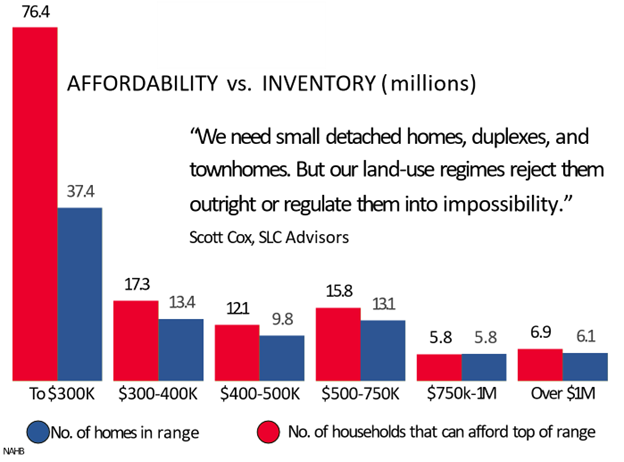In the Field
Francis Palasieski, ABMA’s Director of Government Affairs.
Policy Spotlight: Cutting Permitting Costs to Open the Market for First-Time Buyers
Last week we talked about how to get buyers off the sidelines and back into the market. One way to do that is to ensure more families can afford to be in the market in the first place.
Starting this week, we’ll be sharing one policy proposal at a time, each focused on making entry-level homes attainable and getting more families into homeownership.
Our first focus is permitting. Today, permitting and approvals add nearly 24% to the cost of a new home, that’s tens of thousands of dollars before a single shovel hits the ground. These costs make it harder to build homes in the $300,000-and-under range, where demand is strongest but supply is weakest.

Our proposal is simple:
- Cap permitting and approval costs at a reasonable percentage of a home’s value, so fees and delays will price less families out of the market.
- Incentivize states to adopt modern systems like electronic permitting, “shot clocks” for timely inspections, and self-certification to speed approvals.
Every $1,000 saved in permitting and approval costs brings tens of thousands of families back within reach of homeownership. Reforming this process is one of the clearest, most immediate ways to expand opportunity for first-time buyers and strengthen the market for builders and suppliers alike.
On the Hill
Jim Thompson & Team, ABMA Government Relations
Federal Workforce Development Funding Faces Cuts
WASHINGTON, D.C.—As Congress races to finalize fiscal year 2026 appropriations, federal workforce development programs—especially those tied to the construction industry—are facing major funding challenges and policy shifts.
Budget Cuts and Program Consolidation
President Trump’s proposed FY26 budget calls for a 35% reduction to the Department of Labor and consolidates multiple workforce programs into a new “Make America Skilled Again” (MASA) block grant. The $3 billion grant would replace targeted initiatives such as YouthBuild, Reentry Employment and sector-specific training programs.
While 10% of MASA funds are earmarked for registered apprenticeships, critics argue that consolidation could dilute support for construction-focused training, which often requires specialized curricula and partnerships with unions and trade schools.
Impact on Construction Workforce Development
The construction industry, already grappling with labor shortages and an aging workforce, relies heavily on federal programs to train new entrants. Programs such as YouthBuild and Job Corps have historically provided pathways into construction careers for underserved populations.
- YouthBuild, which integrates education and hands-on construction training, faces uncertainty under the MASA model.
- Job Corps, which was nearly shuttered due to a $213 million deficit, remains operational thanks to $1.76 billion in emergency Senate funding.
Industry leaders warn that without dedicated support, the pipeline of skilled construction workers could shrink, threatening infrastructure projects and housing development nationwide.
Congressional Response and Appropriations
The Senate Appropriations Committee has pushed back against the MASA consolidation, preserving separate funding streams for workforce programs. While some cuts were made, the Senate maintained support for the Job Corps and the Women’s Bureau.
Meanwhile, the House Appropriations Committee advanced its FY26 Labor-HHS-Education bill, which includes:
- $100 million for state apprenticeship programs, aimed at expanding construction apprenticeships.
- $5 million for the Workforce Opportunity for Rural Communities program, which supports multigenerational training in regions with high construction demand.
- $10 million for early workforce readiness grants, potentially benefiting pre-apprenticeship programs in construction.
WIOA Reauthorization Still Pending
The Workforce Innovation and Opportunity Act, the backbone of federal workforce policy, has been expired since 2020. The proposed Stronger Workforce for America Act (H.R. 6655) includes provisions to streamline training and better align programs with industry needs, including construction. But partisan gridlock has stalled progress.
Looking Ahead
With the Sept. 30 deadline approaching, construction industry advocates are urging Congress to:
- Protect and expand funding for apprenticeship and pre-apprenticeship programs.
- Maintain dedicated support for sector-specific training.
- Reauthorize WIOA with provisions tailored to high-demand industries such as construction.
As infrastructure investments ramp up nationwide, the need for a strong, well-funded construction workforce development strategy has never been more urgent.




